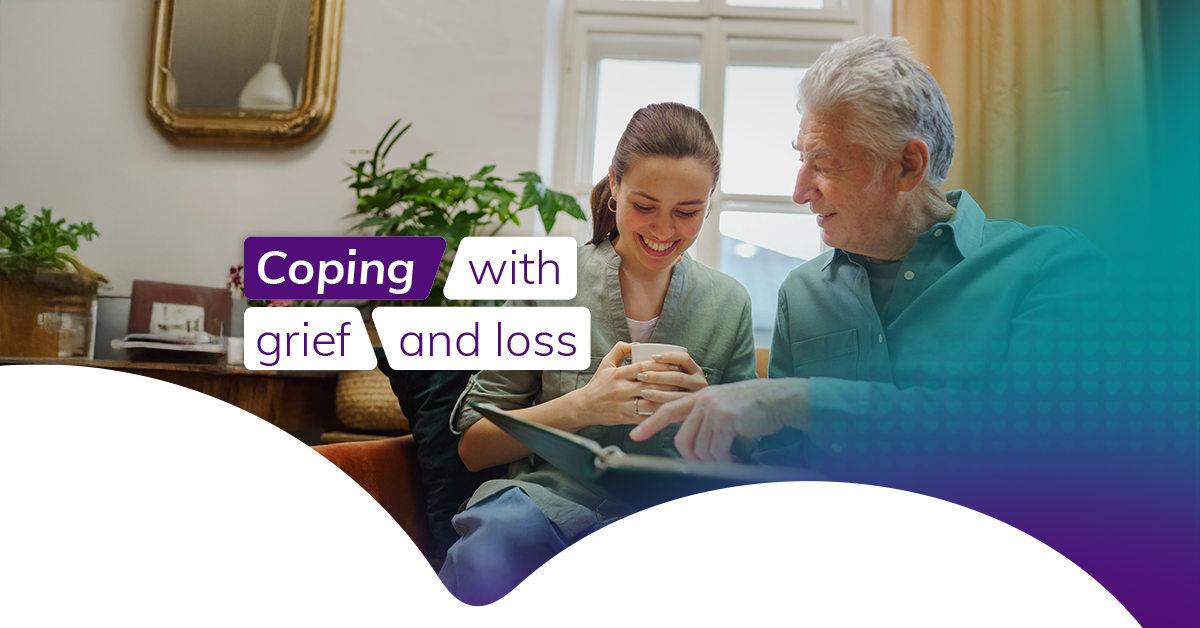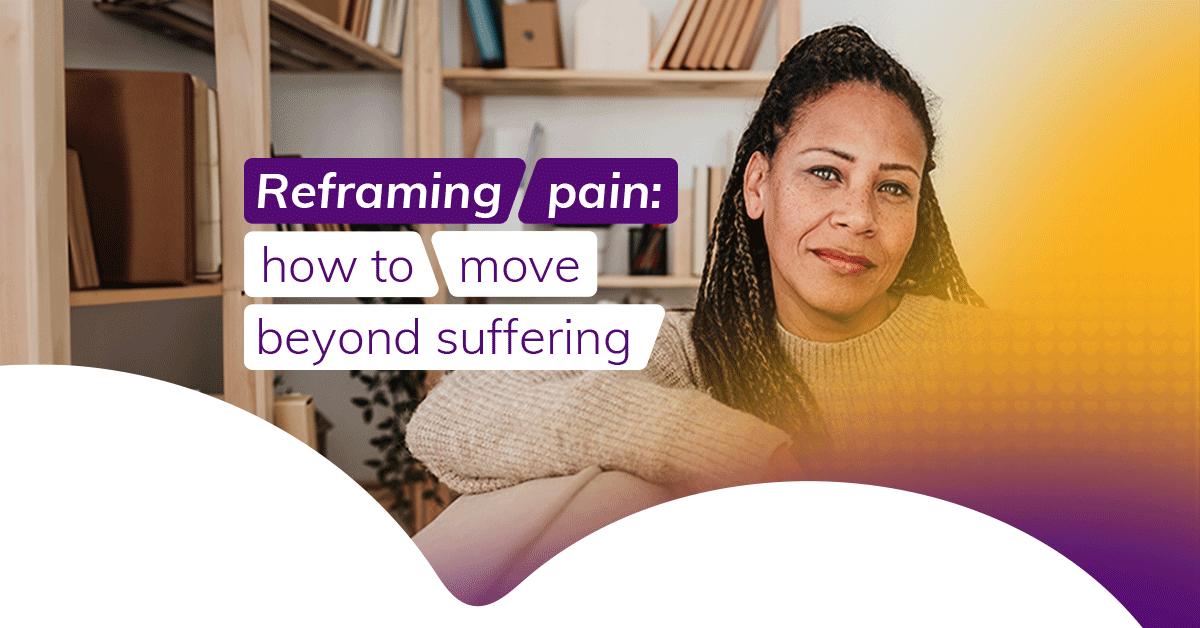

Coping with grief and loss: navigating the journey through healing
Grief is something we all experience at different points in our lives, but that doesn’t mean it gets any easier each time. Dr Kear Brain, Vhi Senior Clinical Psychologist, shares some practical and well-studied methods for coping and living with loss.
Grief is a deeply personal and often overwhelming experience that arises after the loss of someone or something significant. While each person’s journey is unique, the pain of loss is universal. As the famous saying goes, “Grief is the price we pay for love.” The intensity of our sorrow reflects the depth of our connection — and understanding this can help normalise the powerful emotions that come with bereavement.
Fortunately, research and experience show that most people are able to navigate grief without professional intervention, finding strength in their natural resilience, their support systems, and time. Still, models (these are frameworks created to help us understand something) of grief can help us make sense of the emotions it causes and offer reassurance that our responses are valid and part of being human.
William Worden’s ‘Four tasks of mourning’
One of the most practical and widely used frameworks is William Worden’s ‘Four tasks of mourning’. This model encourages active engagement with grief and outlines four core tasks:
- Accept the reality of the loss – acknowledging that the person is gone and will not return.
- Process the pain of grief – allowing yourself to feel and express the wide range of emotions that accompany loss.
- Adjust to a world without the person – both externally (taking on new roles or routines) and internally (redefining identity and meaning).
- Find an enduring connection with the person you lost, while moving forward with life – creating ways to remember and honour the person while continuing to live and grow.
While Worden’s model focuses on tasks to work through, the ‘Dual Process Model of Grief’, developed by Margaret Stroebe and Henk Schut, introduces the idea of oscillation between two key types of coping:
- Loss-oriented coping, which includes confronting and processing the emotions directly related to the loss, such as sadness, yearning, or anger.
- Restoration-oriented coping, which involves adapting to life changes, managing daily responsibilities, and engaging in new activities or roles.
This dual process allows for flexibility, because in real life, we move back and forth between confronting our grief and taking breaks from it. It’s not about constant progress, but rather a healthy balance. Some days are for tears and remembrance; others are for work, laughter, or distraction. Both are essential, and neither invalidates or negates the other, as it’s natural to have ups and downs.
Growing around grief
In addition to these models, Lois Tonkin’s ‘Growing Around Grief’ theory offers another comforting perspective. Tonkin suggests that grief doesn’t shrink over time; instead, we, and our lives, grow around the grief. The sorrow remains, but as we live through new experiences, relationships, and personal growth, it takes up less of our overall life space. This idea helps validate that grief can be a lifelong companion, not something we need to “get over.”
Continuing bonds
Another key concept in understanding grief is the idea of enduring bonds — the continuing connection we maintain with those we’ve lost. Rather than aiming to sever ties in order to “move on,” many find comfort and healing in nurturing a relationship with the person who has passed. This might take the form of talking to them in moments of reflection, visiting meaningful places, celebrating their birthdays, or living in ways that reflect their values. These bonds don’t hinder healing; they support it, allowing the love to persist in a new form. Maintaining these emotional connections helps integrate the loss into your ongoing life story and offers a sense of continuity during all the change.
What do these frameworks of grief tell us?
All of these models emphasise a key truth: grieving is not a simple, linear or time-bound process. People may revisit certain emotions or tasks repeatedly, and that’s okay. Cultural background, the nature of the loss, individual personality, and the availability of support networks all influence how someone grieves. It’s also important to note that while professional therapy can be very helpful — especially when grief becomes complicated or persistent — most people cope and adapt without clinical intervention. Support from friends, family, community, and meaningful rituals can be deeply healing. Activities like journaling, creative expression, nature walks, and acts of remembrance often support emotional processing.
In the end, grief is not a problem to be fixed — it’s a process to be lived. It speaks to the love we shared, the memories we hold, and the resilience we carry forward. Though the pain of loss never disappears entirely, with time and support, it becomes part of who we are. We learn to carry it alongside hope, purpose, and even joy once more. In the quiet aftermath of loss, we come to realise that those we love never truly leave us— they become a part of who we are. Their influence lingers in our choices, our memories, and the way we continue to live.
The Poet E. E. Cummins beautifully captured this truth when he wrote, “I carry your heart with me (I carry it in my heart).” Grief, then, is not only the price we pay for love, but also the evidence of that love’s enduring presence. In carrying the hearts of those we have lost, we honour their memory not by letting go, but by bringing them with us as we continue to grow, heal and live.
This content is for information purposes only and is not intended or implied to be a substitute for professional medical advice, diagnosis, or treatment. Always seek advice from your GP or an appropriate medical professional if you have concerns about your health or before commencing a new healthcare regime. If you believe that you are experiencing a medical emergency call 999 / 112 or seek emergency assistance immediately.




